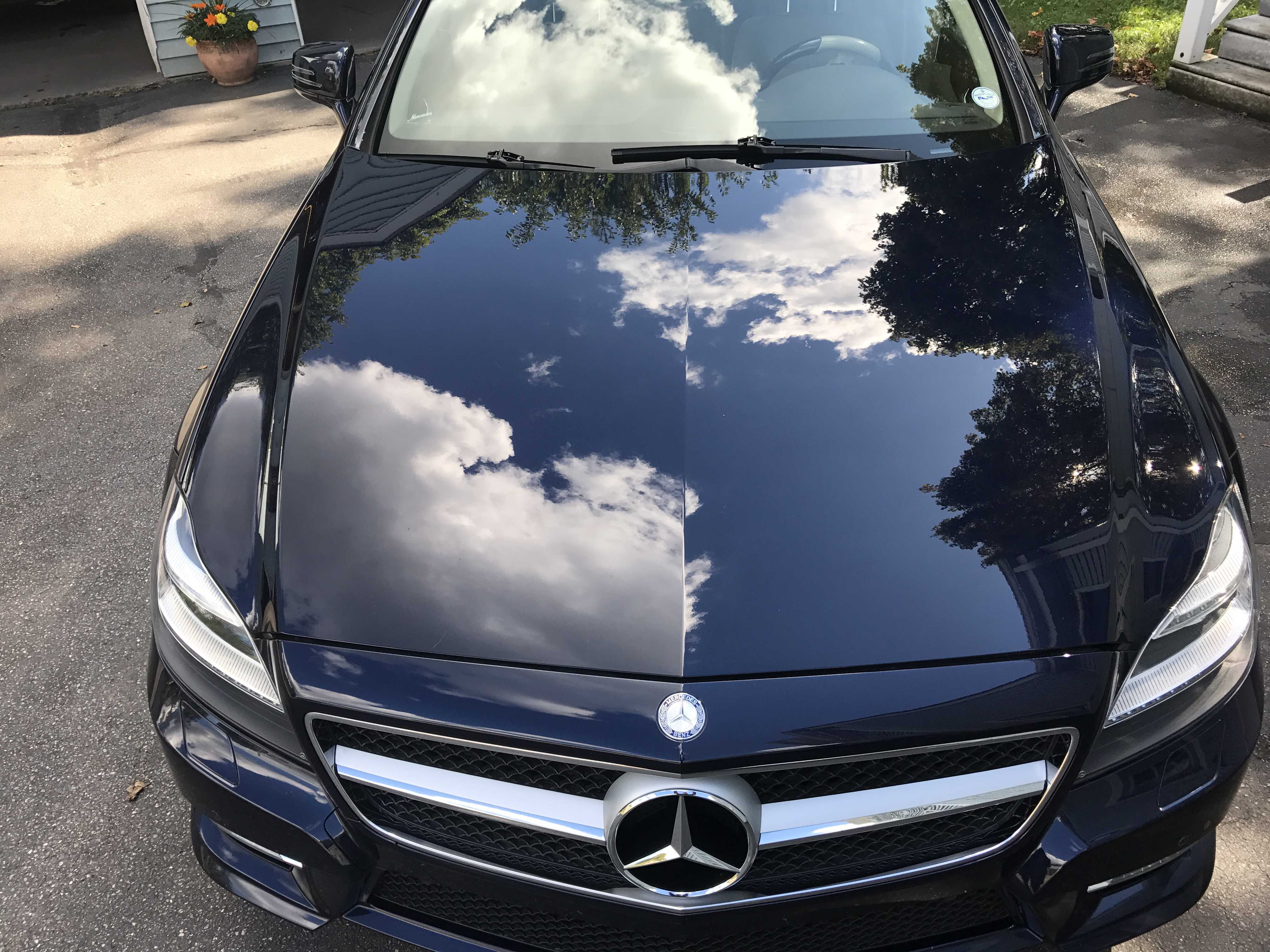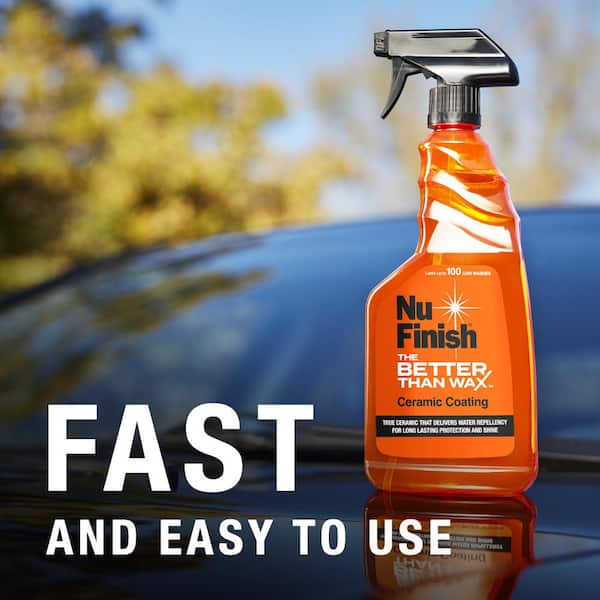Why Ceramic Finishing Is the Ultimate Service for a Flawless End Up
Ceramic covering has arised as a leading solution for those seeking a flawless surface for their vehicles, many thanks to its exceptional longevity and protective features. What aspects truly established ceramic finishing apart?
What Is Ceramic Covering?

When applied properly, ceramic covering creates a hydrophobic surface area that drives away water and dirt, making it easier to clean up and preserve. Unlike standard waxes or sealers, which typically offer temporary defense, ceramic coatings can last for several years, depending upon the item top quality and application approach. The process of using ceramic coating requires precise preparation, including extensive cleansing and occasionally repaint correction, to make certain optimum bonding and efficiency.
Ceramic coatings are not restricted to auto surface areas; they can also be used on numerous materials, consisting of glass, steel, and plastics, offering a functional option for improving security. In general, ceramic covering stands for a substantial advancement in surface area protection modern technology, combining both aesthetic and practical advantages for a vast array of applications.
Advantages of Ceramic Covering
While many surface security options exist, the advantages of ceramic covering stand apart as a result of its one-of-a-kind buildings and durable efficiency. Among the primary advantages is its phenomenal sturdiness. Ceramic Coating Philadelphia. Unlike traditional wax or sealants that need constant reapplication, ceramic finishings give a resistant layer that can last for several years, substantially lowering maintenance efforts
Another remarkable benefit is enhanced security against environmental impurities. Ceramic finishes develop a hydrophobic surface that pushes back water, dirt, and different toxins, making it much easier to cleanse. This feature not just protects the vehicle's appearance however also reduces the risk of rust and oxidation, particularly in severe weather condition conditions.
Furthermore, ceramic finishes use premium resistance to UV rays, preventing fading and destruction of paint over time. This UV defense is essential for keeping the aesthetic worth of surface areas and automobiles exposed to route sunshine.
Furthermore, the glossy finish attained with ceramic coating boosts the general aesthetic charm, providing surface areas a showroom-quality shine. Overall, ceramic layers stand for a considerable development in surface security innovation, giving enduring advantages that deal with both functional and aesthetic demands.
Exactly How It Functions
Comprehending the scientific research behind ceramic finishings discloses how they offer such remarkable security and longevity. At its core, a ceramic finishing is a liquid polymer that chemically bonds with the vehicle's manufacturing facility paint. This bonding produces a protective layer that is both hydrophobic and oleophobic, repelling water, dust, and oil. The main part of a lot of ceramic finishes is silicon dioxide (SiO2), which is stemmed from quartz. This substance adds to the finishing's solidity and resistance to scratches, UV rays, and environmental contaminants.
The application process includes numerous actions, consisting of surface area preparation, which is crucial to achieving ideal adhesion. As soon as used, the coating goes through a healing process, during which it sets and develops a semi-permanent bond with the paint surface. This bond is what distinguishes ceramic finishings from traditional waxes and sealers, providing a longer-lasting safety barrier that can endure for many years.
In addition, the thickness of the finish can boost its protective top qualities, making sure that it can hold up against harsh conditions. Ultimately, the scientific research of ceramic layers combines sophisticated products with cutting-edge application methods to provide an exceptional level of defense and visual enhancement for cars.
Contrast With Conventional Techniques
The benefits of ceramic layers become specifically noticeable when contrasted to typical paint defense techniques such as waxes and sealants. While waxes supply a momentary luster, generally lasting a couple of weeks to a couple of months, ceramic layers offer a durable safety layer that can sustain for numerous years. This durability substantially reduces the frequency of reapplication, making ceramic layers a more economical solution gradually.
Furthermore, standard approaches usually call for considerable preparation and several applications to achieve a satisfactory degree of defense. In contrast, ceramic coatings bond at a molecular degree with the vehicle's surface, producing a robust shield versus environmental contaminants like UV rays, acid rainfall, and road salts. This bond boosts check my site the vehicle's resistance to scratches and swirl marks, which prevail with traditional waxes and sealants.
Furthermore, the hydrophobic properties of ceramic layers fend off water and dust, causing less complicated cleansing and upkeep. On the other hand, wax and sealant-treated surface areas can draw in crud, necessitating more constant cleaning - Ceramic Coating Philadelphia. Overall, ceramic coatings not just provide exceptional defense but also supply a much more long-lasting and aesthetically attractive coating, establishing them as the preferred choice for discerning automobile owners
Application and Maintenance Tips

Using a foam applicator, use the finish in little areas, complying with the supplier's guidelines concerning thickness and overlap. Allow sufficient healing time in between layers, usually 24 hr, to make sure correct bonding. After application, it is vital to prevent exposure to water or extreme elements for at the very least a week to enable the covering to fully cure.
For maintenance, clean the car regularly with pH-balanced soaps and prevent unpleasant materials. Touchless auto cleans are suggested to decrease scratching. Additionally, making use of a ceramic upkeep spray can enhance the coating's hydrophobic residential properties and long life. Routine evaluations for any type of indicators of wear will help keep the coating's honesty and maintain that pristine surface.
Final Thought
Finally, ceramic coating becomes an exceptional choice for attaining a remarkable vehicle coating. Its exceptional durability, protective high qualities, and hydrophobic properties dramatically enhance the additional reading vehicle's look while streamlining upkeep efforts. By creating a robust bond with manufacturing facility paint, ceramic layer properly shields against scratches, UV rays, and environmental impurities. With a life-span extending several years, this innovative option not just maintains yet likewise raises the general aesthetic charm of lorries, making it an affordable investment for cars and truck lovers.

Comments on “The Science Behind the Sturdiness of Ceramic Coating Philadelphia Applications”